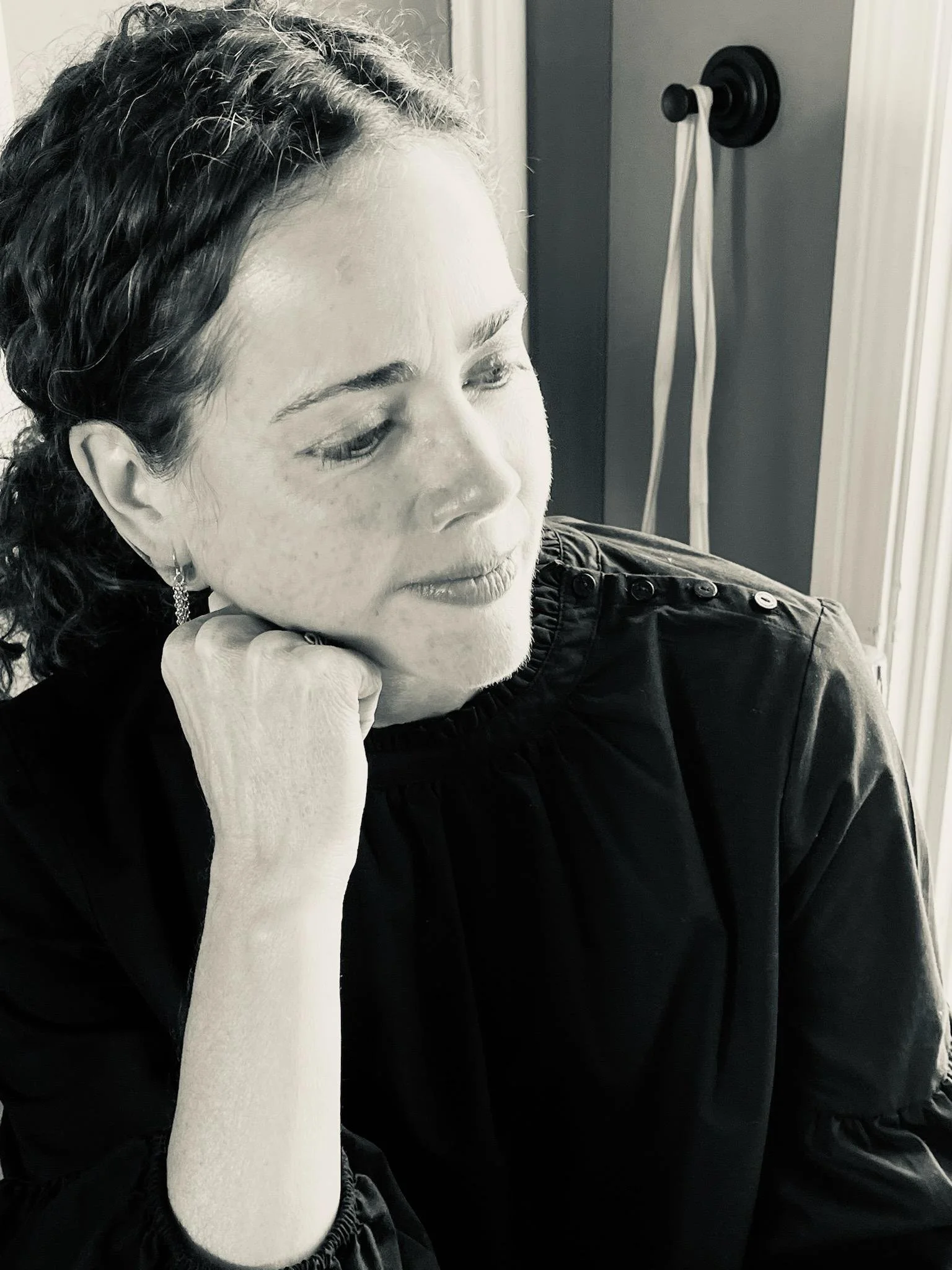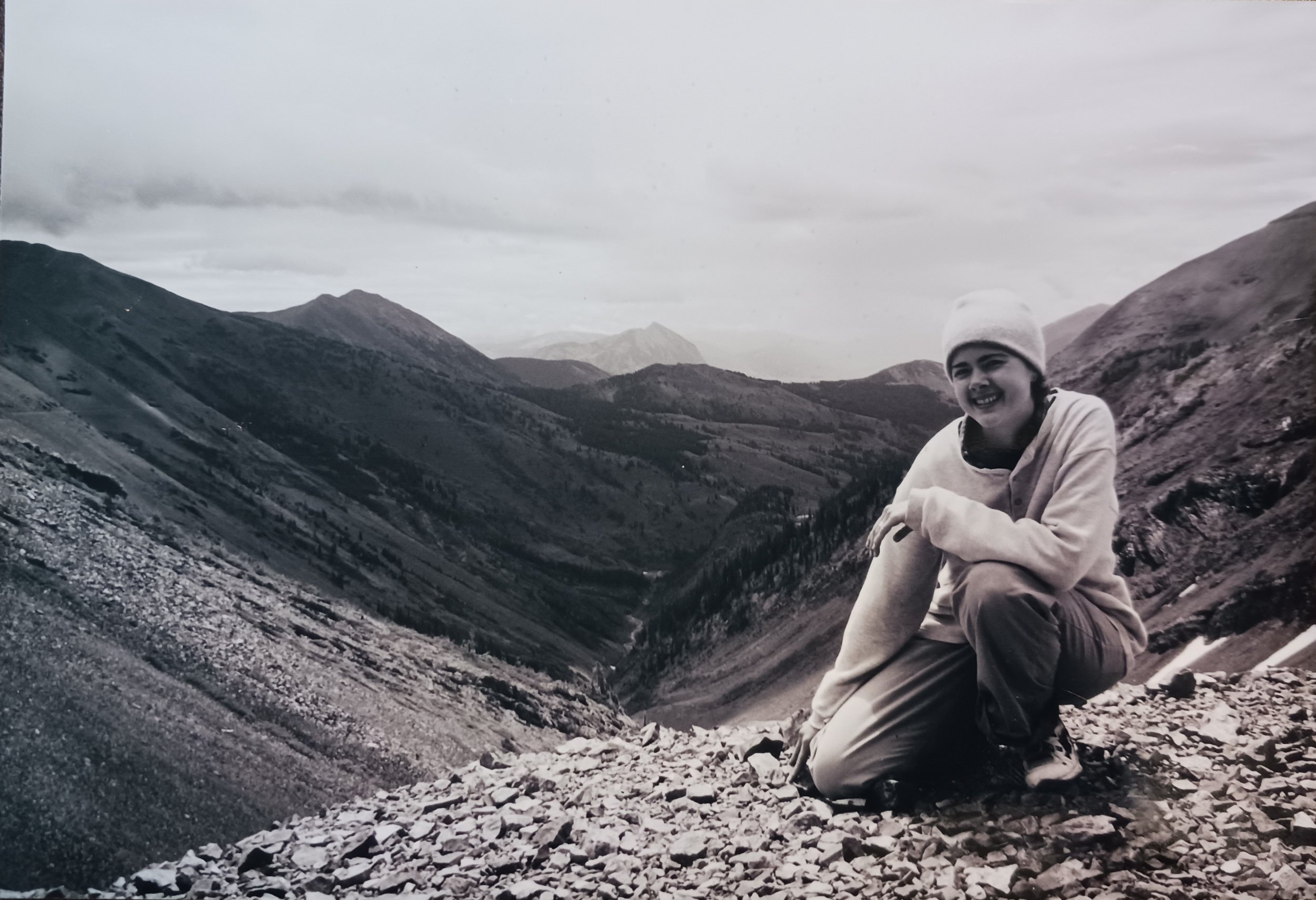On Repeat: A Craft Essay by Jennifer Fair Stewart
Repetitio mater studiorum. Repetition is the mother of learning. These words are on a dog-eared index card magnetized to my fridge. In my writing life, repetitions can be a life-giving route to the borders of comprehension.
Images, metaphors, words, and phrases tend to collect, repeat, and connect in my mind, somewhat like kintsugi, the Japanese art of mending pottery: brushstrokes of gold, in repeated layers, which seam together separate pieces. Sometimes the pieces become a poem in a heady rush, and sometimes they come to poetic fullness years later. I try to stay awake and pay attention to holy moments & holy things; I’m thankful when my occasionally distracted, fractured mind is reached in this repetitive way, gently or forcibly. And, I suppose, all my poems at their core speak again and again of love, to some degree; they’re all tethered to the repeated theme of a bone-and-soul deep kind of love.
My grandma’s particular way of love for her family first showed up in the poem “Into Thy Hands,” which won third prize in The Orchard Street Press’ 2023 poetry contest. This poem provided a way for me to return to the writing life in earnest, and it also led to the recent publication of my first poetry chapbook with The Orchard Street Press. I feel so grateful and so loved by my grandma because of that connection like it’s a parting gift from her. I thought I was done writing about Grandma after that publication, but along came “Spellbound,” and I found myself connecting once more with the small, everyday, yet remarkable demonstrations of her love. My loved ones who’ve gone ahead are very much still with me in my writing, I believe, because this kind of love is an eternal thing.
I write poems to process events, relationships, films, books, paintings, music, memories, grief, suffering, signs, wonders, and various manifestations of love. I write poems to feel alive and tap into an ongoing conversation (with God, myself, the reader, other artists, etc.). When a line or phrase or image rises up in my mind, for the first or fiftieth time, I grab my pen and notebook, or a nearby paper napkin, and get ready for the electric zing of both witnessing a poem swirl and coalesce, and actively wrangling it onto the page. Repeatedly, it feels as though I can’t not write. Repeatedly, a poem springs up to accompany me on my morning run. Repeatedly, it takes a disciplined willingness to place myself at my writing desk and practice, or just start writing something. I have lots of sticky notes and scraps of paper and lists of lovesome words in the back of my poetry notebook. At times, it’s readily apparent to me which bits go together; more often, though, the patchwork pattern of connection takes time to develop. Repeatedly, after a poem is “finished,” I am surprised and delighted to witness some connections that I didn’t even realize were there, such as another layer of meaning to a certain word or image. It’s a truly thrilling process for me, because all that I have to offer goes into the particular poem of the moment, but there’s also the sense that the poem is coming from outside of me; when it’s done, I feel a mix of satisfaction and panic, wondering if I’ll be able to write again. To discover new implications in the poem afterward is serendipitous; it makes the poem seem alive and active to me.
On my writing desk, there’s a black & white photo of me in my twenties, smiling at my beloved behind the camera, while I’m crouched at the edge of a precipitous trail at high elevation, layers of Colorado’s Rocky Mountains in panorama at my back. Outside of the frame, not captured on film, is a long trail of repetitive switchbacks that led me to this amazing vantage point. This is a picture of how I often feel when I write: perched on the brink of the wild; full of all the steps and stages of ascent; held in a lover’s gaze. The poet Wallace Stevens put it this way: “The poet is the priest of the invisible.” A good priest administers the sacraments, and this involves a loving, repetitive handling of holy things as a conduit to the divine. I love the art form that is poetry; I love playing with words in both their depth of meaning and their limitation: sculpting them onto the page, hearing their music, tonguing a word and holding it in my mouth to savor. And, I’m thankful that, like any artistic endeavor, poetry is rooted and grounded in a repetition that can teach and lift the practitioner and the reader to another realm. I think the artist Joel Sheesley renders these ideas beautifully in his collection of paintings known as Puddle Paintings 2006-2015, which visually documents his repeated interactions with two asphalt puddles in his driveway, over a span of years. My favorite member of this series is the painting entitled Comes the Poet. As a poet, I’ve got a foot in both worlds, the visible and the invisible, one foot at the edge of a puddle on the ground, the other transported to a sky and cloud and bird place, a moon and star place, a transcendent place.
You can read more about me and my poems at https://jenniferfairstewart.carrd.co/

